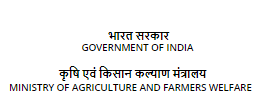Recombinant antigen based indirect ELISA for detection of Porcine Reproductive and Respiratory Syndrome Virus antibodies in domestic pigs (PRRS antibody ELISA kit)
Background:
Porcine Reproductive and Respiratory Syndrome (PRRS) is an economically important viral disease of pigs, characterized by reproductive problems in breeding animals and respiratory disease in pigs of any age. Since 2013, outbreaks of PRRS has been causing severe pig mortality and economic losses to the pig farmers in India, especially in the North-eastern region. Serological surveillance for PRRS in pigs forms an essential part of disease monitoring and control programme. Currently, commercially available ELISA kits are being used by Regional Disease Diagnostic Laboratories (RDDLs) and State Disease Investigation Laboratories for PRRS serodiagnosis, but they have to be imported at a high cost. Hence, there is a pressing need to deliver a cost-effective indigenously developed antibody detection kit for screening of pig sera for PRRS.
Technology Details:
The NIHSAD-PRRS antibody ELISA kit is a recombinant antigen based indirect ELISA for detection of PRRSV antibodies in domestic pigs. Most of the commercially available PRRS antibody ELISA kits employ antigens of classical PRRS virus genotype 1 and 2. NIHSAD-PRRS ELISA kit has a mixture of recombinant antigens which are intended to target antibodies against classical genotype 1 and 2, as well as highly pathogenic variant of PRRS genotype 2 which is currently circulating in India, China and south-east Asian countries. Thus, the assay has a wider PRRSV antibody coverage. The kit also employs a mock antigen coated in alternate (even numbered) columns to remove non-specific reactions. The indigenously developed ELISA for PRRS serodiagnosis is a cost-effective alternative of costly imported kits and can be performed easily by laboratory personnel. The ELISA kit can be used for regular sero-surveillance and monitoring of PRRS in domestic pigs in the country, aiding in the diagnosis and control of the disease and improving livelihood of pig farmers.


